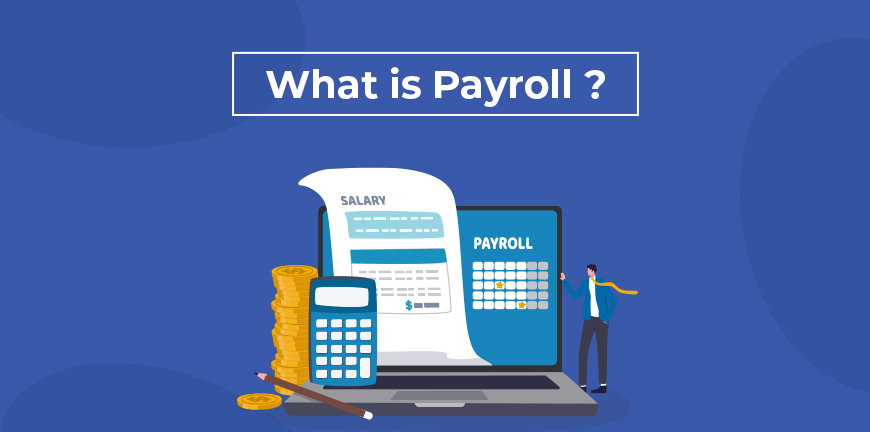Payroll processing is one of HR’s most important tasks, and it guarantees that workers are paid on schedule and appropriately. However, what precisely is involved? Payroll processing is essential to every business, handling everything from managing deductions and compliance to calculating wages and taxes. In this guide, we will explain the payroll meaning, procedure, and significance of payroll in HR operations.
Payroll and Essential Documents
Payroll is the process of paying salaries to the employees. But how the process begins? It starts with the employee list and ends with keeping the records of expenses. Payroll in HR involves calculating due to the employees, managing taxes or other charges, and distributing payments. It is one of the critical functions of the HR department to make sure employees are getting the right amount of pay for their work in a timely.
Here is the list of required Documents for Payroll processing.
- The company provides the employee with Form 16, which is used to deduct income tax from their paycheck.
- Tax deducted at source (TDS) on non-salary payments is reported using Form 26Q.
- Employees verify their eligibility for the EPF plan by submitting a declaration form called Form 11.
- The job Application form provides crucial employee details that include personal information, educational background, and work experience, together with references.
- Bank Information includes bank account details for direct salary deposits.
- Medical Insurance Forms ensure employees are enrolled in health benefits provided by the employer.
- Retirement Plan Documents include details of employee contributions to pension or retirement savings plans, such as the Employee Provident Fund (EPF) or National Pension Scheme (NPS).
How to Create a Payroll Policy?
HR needs to ensure that the payroll process is accurate in accordance with all regulations. For this, they build guidelines with the payroll department and employees.
Let’s look at what, in general, payroll policy covers.
Workweek Definitions
A workweek definition clearly ensures overtime laws and wage regulations. You determine when the workweek starts and ends; therefore, it has seven consecutive 24-hour periods.
Time and Attendance
Payroll is only accurate with proper timekeeping. Define how employees should track hours, such as through time clocks or paper timesheets, the approval process, and the consequences of false reporting.
Break Periods
According to the Factories Act of 1948, employees should receive a 30-minute break after five hours of continuous work. State break times, whether paid or unpaid, and if employees must punch in and out.
Overtime
Employees working more than nine hours a day or 48 hours a week are entitled to overtime pay at double their regular wage. Specify eligibility, rates, and compliance with state laws offering better benefits.
Pay Periods
Determine how often to pay employees – usually monthly and which day in the cycle it will be payday.
Payroll Deductions
- Compulsory Deductions: List federal and state income taxes, including relevant tax forms and wage garnishment information.
- Voluntary Deductions: Describe other benefits, including health insurance and retirement plans; also, note whether these may be paid for on a pretax or post-tax basis
Wage Form
Clearly indicate how employees are paid—hourly, salaried, bonuses, commission, or stock options. Also, comply with final wage payment laws for departing employees.
Payroll Recordkeeping
Recordkeeping of payroll meaning the records must be retained as required by law. Define recordkeeping rules and ensure confidentiality.
Step-by-step Payroll Processing
Payroll must be systematic to ensure timely payments and legal compliance. Here’s a concise step-by-step guide to payroll processing:
Collect Employee Data
Gather employee details like salary, work hours, bonuses, and deductions. HR must keep records updated, including new hires, promotions, and salary changes. Accurate data prevents payroll errors.
Calculate Gross Pay
Gross pay is the total salary before deductions, including base pay, allowances, and bonuses. It is calculated using the employee’s agreed compensation structure.
Deduct Taxes and Contributions
Deductions include income tax, professional tax, and social security contributions. Payroll software often automates these to comply with tax laws and statutory obligations.
Apply Other Deductions
Non-tax deductions include loan repayments, salary advances, or agreed employer-employee deductions. These are factored into payroll before finalizing salaries.
Payroll Distribution
The payroll process in HR or finance ensures timely salary disbursement via direct deposit, checks, or payroll cards. Payment methods should be clearly communicated to employees.
Maintain Payroll Records
Payroll records, including payslips and tax deductions, must be stored as per legal requirements. These records help in audits and compliance checks.
The Role of Human Resources in Payroll Management
Payroll efficiency, accuracy, and compliance are all greatly influenced by human resources (HR). Here are some ways that HR helps with payroll processing.
- Maintains records of salaries, benefits, and tax details.
- Manages compensation, bonuses, and payroll policies.
- Ensures accurate records for payroll calculations.
- Keeps payroll aligned with legal and tax regulations.
- Works with finance to ensure timely salary payments.
- Addresses concerns about salaries, deductions, and benefits.
- Maintains payroll records for compliance & transparency.
Conclusion
Overall, payroll processing is necessary to ensure that employees are paid on time and accurately while adhering to regulatory requirements. Payroll meaning is a well-run payroll system that supports financial stability and fosters a happy work atmosphere while optimizing efficiency.
